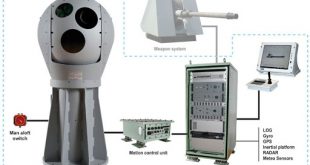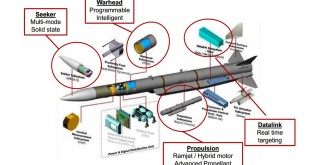A rapidly increasing percentage of the world’s population is connected to the global information environment. At the same time, the information environment is enabling social interactions that are radically changing how and at what rate information spreads. Both nation-states and nonstate actors have increasingly drawn upon this global information environment …
Read More »Threat of concealed weapon and missiles systems on standard international shipping container.
Containerized weapon systems are weapons built to carry everything they need to function inside a standard shipping container. Many nations including Russia, Israel, China, and the United States have had various “containerized” weapons in their stockpile for years now. In 2010, it was reported that a Russian company is …
Read More »Precision Guidance Kit turn artillery rounds into smart weapons that penetrate A2/AD environments and destroy threats even in GPS jammed environments
Artillery ammunition is designed for use in guns, howitzers, and mortars. Size designations for artillery ammunition range from 37MM through 280MM. Artillery ammunition can be classified according to weapon system (gun, howitzer, mortar), filler composition (explosive or chemical), and military use (practice or service). The diameter, or interior, of a …
Read More »AFRL’s Golden Horde program—developing networked, collaborative, autonomous (NCA) systems like swarming drones or “fire and forget” weapons
Current weapons generally fly a pre-designated mission. If the enemy does something unexpected, preprogrammed weapons are ineffective, and additional weapons may be required to complete the mission. Networked, collaborative and semi-autonomous weapons are advantageous since they observe and react to the enemy in real time, helping weapons overcome adversary defenses …
Read More »DARPA MACH & HEAT developing rugged high temperature materials RF radome & IR window for hypersonic vehicles
The era of hypersonic flight had arrived. Countries are developing future hypersonic Spaceplanes , enabling intercontinental travel at very high speeds, that could cut the journey times from the UK to Australia from the current duration of around 20 hours to as little as two hours. They shall also provide …
Read More »fire control system
A fire-control system (sometimes called FCS) is a number of components working together, usually a gun data computer, a director, and radar, which is designed to assist a ranged weapon system in targeting, tracking, and hitting its target. It performs the same task as a human gunner firing a weapon, …
Read More »Militaries race to develop Very Long Range Air-to-Air missiles with features like large ‘no-escape zone’, AESA Radar, EO/IR Imaging, Network centric data links and hypersonic speeds
Over the past few decades, advances in electronic sensors, communications technology, and guided weapons may have fundamentally transformed the nature of air combat. One of critical technologies was superior situational awareness (SA) when a pilot has a better understanding of the position of all relevant aircraft and their activities in …
Read More »Militaries continue to enhance Short and Medium Range Air-to-Air missiles for achieving superiority in Dogfights
Over the past few decades, advances in electronic sensors, communications technology, and guided weapons may have fundamentally transformed the nature of air combat. One of critical technologies was superior situational awareness (SA) when a pilot has a better understanding of the position of all relevant aircraft and their activities in …
Read More »Aircrafts & Drones are becoming increasingly important for Anti-Submarine Warfare (ASW) missions
Three decades ago, only a handful of major powers had effective submarine capabilities but, today, fleets in operation around the world are growing rapidly. Emerging superpowers, like China, can add naval capacity equivalent to a European country’s in the space of a few years. The threat from submarines is serious …
Read More »Militaries test Stand-off smart anti-airfield weapon (SAAW) to destroy enemy runways
Anti-runway penetration bombs are systems involving bombs or bomblets designed to disrupt the surface of an airfield runway and make it unusable for flight operations. India’s state-owned Hindustan Aeronautics Limited (HAL) has successfully test-fired an indigenous stand-off smart anti-airfield weapon (SAAW) in Jan 2021. Developed by Defence Research and …
Read More » International Defense Security & Technology Your trusted Source for News, Research and Analysis
International Defense Security & Technology Your trusted Source for News, Research and Analysis






